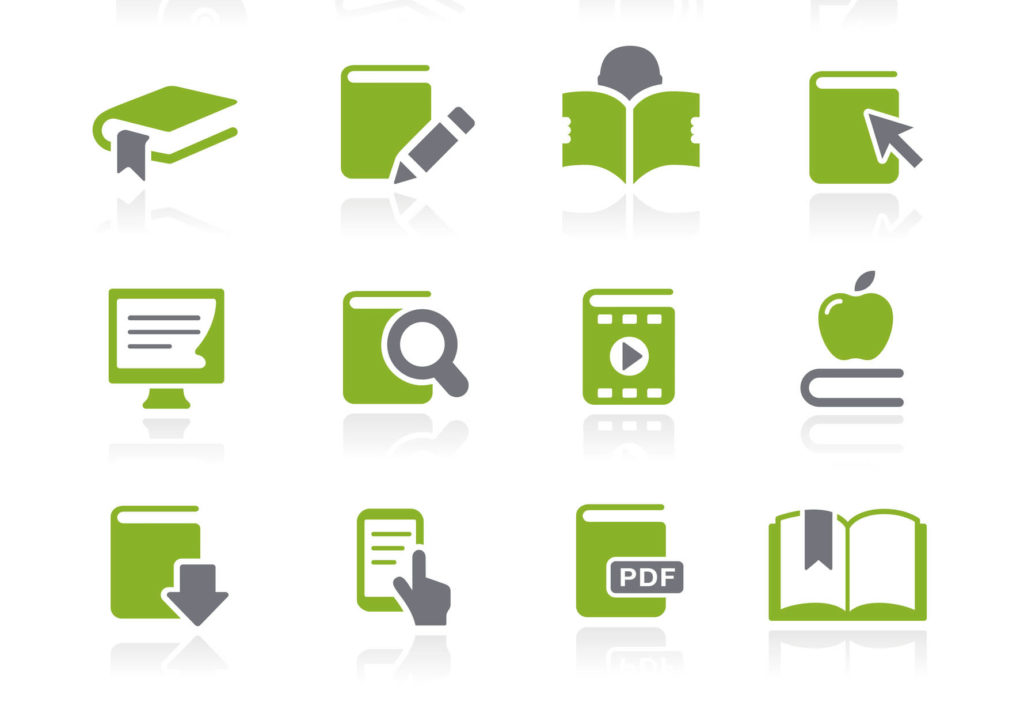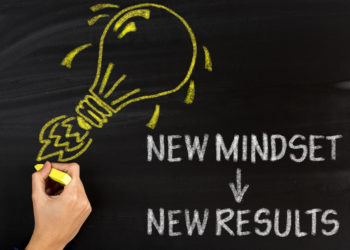What roles are e-books now playing, and what roles will they play, in scholarly disciplines for which books are a primary, often the apex, scholarly form? This is the first of two posts about e-book publishing and university presses. I’ll lay out here some of the basics, and next week I’ll be joined by Lisa Bayer, Director of the University of Georgia Press and John Sherer, Spangler Family Director of the University of North Carolina Press, for a closer look at how these issues and more are playing out at their presses, and what they see for the future of university press e-books.

Book disciplines are facing a lot of the same questions about digital publishing that journal-based disciplines have been trying to answer for two decades. How can we deliver this scholarship in digital form cleanly, efficiently, and sustainably? How will libraries acquire it? How will readers access and then use it? How will authors understand their relationship to the publisher of it?
This is not to say that e-books are new; they’re not. But the simultaneous pressures, themselves not new, of increasing scholarly output, pinched library budgets and the intensive resources needed to produce scholarly monographs are pushing university presses to think about new ways that digital books can alleviate these and other pressures, including the important goal of increasing access to scholarship.
There are three basic things to know about scholarly e-books. The first is that university presses function in two value markets: scholarly and financial. University presses have a mission to serve the development of knowledge. It is a resource intensive mission. And that mission is usually difficult to square with economic markets, because so few scholarly books make back their costs. If scholarship is protein, the market often prefers sugar. But as a society, we need protein, and we need to support its production. This reality is at the heart of the debate about Stanford University Press, and it is at the heart of projects such as the UNC Press Sustainable History Monograph Pilot, led by John Sherer.
The second is that platforms to distribute and access e-books have been developing in interesting ways. The big aggregators, JSTOR, Project MUSE, and Oxford Scholarship Online, have been joined by university presses exploring direct sale to libraries of their own lists. JSTOR, begun in 1995 as the Journal Storage Project, was the brainchild of William Bowen’s insight that the increase in scholarly journal output needed to be stored digitally simply because libraries were running out of space. The implications of providing journals digitally have been profound, and reach well beyond providing more journals for less bricks and mortar space in research libraries. Among the most positive outcomes is that access can be expanded as internet access expands. Among the most challenging are that digital production requires constant technological updating, requiring additional expertise, time and costs for publishers. The connection that scholars might have once felt for the societies that publish a lot of scholarly content has been reduced, as both individuals and libraries acquire their content through aggregators. These issues are the same for books– and maybe more so.
Books at JSTOR launched in 2012, and now includes over 75,000 scholarly e-books. Plenty of presses offer their e-publications via multiple outlets. Yale University Press, for example, lists 11 access points for its e-books (including single title sales through Amazon, Barnes and Noble, etc.). A few presses are also striking out on their own to provide direct content access. Earlier this year the University of Michigan Press E-Book collection launched, and the press Director Charles Watkinson describes it, even in early days, as a “qualified success.” As he pointed out, it’s not only a matter of offering access to an individual press’s titles, but getting into the workflow, which means getting discovery to those titles through the big services, ProQuest, EBSCO, and OCLC.
The third is that the question of how digital text can serve longform scholarship — for the scholar producing scholarship, and for the reader consuming it, remains unanswered. I can report from the ground that e-books are both the bane and the salvation of my graduate seminars. Students still report that they prefer print, when they can afford to buy books or when they can get a copy from our library at William & Mary or through interlibrary loan. But in the absence of print, digital is essential.
This has long been a question for scholarly publishers and librarians. Will scholars and students adapt to digital text? Can our eyes–and brains — absorb complex arguments without the tactile reinforcement of interacting with the page (turning it, dog-earing it, marking it)? My anecdotal observation is that more students are appearing in class with tablets, contrary to my expectations that laptops plus smartphones were going to limit tablet use if only because of cost. They are using those tablets to access e-books from the library, and to save book chapter PDFs. The friction variable is considerable, as some platforms make it harder to locate or to navigate within different sections of a book. And don’t get me started on what it is like to try and read the source notes on any of these platforms (short version: gruesome).
Externally developed technologies are making an important impact, too. The utility of PDF apps plus tablet pencils that allow markup makes a huge difference in e-text usage. That makes sense, as I have seen the journal and book editors at the Omohundro Institute shift to using large size iPads and pencils for editing work. And I now ask all students to send papers to me as PDFs so I can “write” in the margins and across the text and email back a flattened copy. This system affords most of the virtues of paper. Whether most is enough, and whether this is a systemic trend is another matter as libraries contend with limits on e-access and the costs of purchasing e-books. Books at JSTOR initiated a look at “Reimagining the Monograph” to ask what readers (are readers “users” now?) most want. Some of what the study uncovered is the important compatibility and complementarity of traditional paper books and e-books or digital projects. These are additive forms, not replacement technologies.
But this just scratches the surface, given that “books,” and especially e-books, are a shifting form. Presses are beginning to support the changing form of books in response to Digital Humanities research outputs. Michigan’s Fulcrum and Stanford’s digital project publishing are offering scholars a way to represent complex digital research and interpretation. And, at the Omohundro Institute we are working on the second iteration of the OI Reader, our platform for multi-media scholarship. These are also expensive developments, meaning that the pressures on mission-driven university presses continue — or perhaps the opportunities for university presses to lead continue to expand.
Discussion
16 Thoughts on "Will E-Books Feed University Presses — Or Eat Them? Part One"
Good thoughts.
I have long held that publishers should jointly fund an e-book / digital reading platform and take some of Amazon’s business. The kindle is great for a novel, but it’s a horrible tool for many books — including academic books — and it’s awful for magazines.
Why are we allowing Amazon to get between us and the reader, and to control the customer relationship? Disintermediate them!
When it comes to scholarly books (excluding textbooks), the target market in direct terms is academic libraries, not individuals, and since Amazon has no ebook program that works well with libraries, they are pretty much irrelevant. The biggest sellers of scholarly ebooks (for university presses) are EBSCO and Proquest. Of course, libraries purchase on behalf of their patrons, but it is librarians making the purchase decisions that make or break university press budgets. Reading platform UX is only one of many factors going into those decisions and by no means the most important one, because we buy for the long term, and in the long term, the platform technologies change significantly.
This is not true. Most academic books are sold to individuals. For university presses on average about 25% or less are sold to libraries.
Are you counting print book sales in that data, because our context here is specifically ebooks. I would really be interested in the source of data that says that the majority of academic ebook sales are to individuals, not libraries.
I did the research myself as part of a series of Mellon grants and published the findings on the Scholarly Kitchen. Roger Schonfeld of Ithaka S+R has also studied related issues, which are published on the Ithaka site. The context of Karin’s post was NOT ebooks alone but books overall as it should be, because that is what publishers work with, In any event, with ebooks comprising only about 20-25% of overall revenue, it would be very odd indeed not to include print. The fact is that libraries are not the center of the book publishing universe.
Information on the studies can be found here:
https://scholarlykitchen.sspnet.org/2018/07/23/good-data-bad-data-know-ive-share-library-book-acquisition-patterns/
and here:
https://sr.ithaka.org/publications/2019-report-library-acquisition-patterns/
Thanks for the links, David, and thanks Joseph for doing that research – it’s very interesting, although since it was library-acq focused I didn’t see it answering the question about the ratio of library to non-library scholarly book purchases, but maybe I missed it or that’s in some other study. By the way, our experience as a small academic library in Canada is totally different from what that study found in the US as well as totally different from what the blog post commenters said. We are using Amazon, not Gobi, as our dominant-by-far source of print book purchases, and we do NOT have separate pots of money for firm orders (print or e) versus DDA. Our entire monograph budget is all one pot and that includes everything even book subscription packages.
You say the “target market in direct terms is academic libraries, no individuals, and since Amazon has no ebook program that works well with libraries, they are pretty much irrelevant”.
The target market may be academic libraries, but the target of academic libraries ARE individuals.
My university bookshop has stopped selling paper books and now they’re selling ebooks. I hate it. It’s definitely convenient particularly for studying from a distance but I’m sure there are many out there like me that when it comes to studying, it has to be paper.
This post spends a lot of room about the technology/UX aspects, and virtually none at all on the purchase model aspects, which I believe in the medium/long run are going to be far more important to the question posed in the post title. TL;DR version: University presses need to embrace DDA and EBA purchase models, or else the commercial publishers are going to swallow every last monograph dollar in library budgets just as they have journal dollars through Big Deals. JSTOR and Project Muse are both providing wonderful EBA options for university presses, and any presses that think they will do better financially by going it alone are in for a very bad shock in the next few years. DDA = demand driven acquisition, EBA = evidence based acquisition. Both provide libraries the chance to make the books discoverable and usable before actually committing to full purchase. In DDAs, the patron’s action of using the book triggers the purchase of it, whereas in EBA the librarians make the decision annually, selecting from a larger list that patrons had access to (but didn’t necessarily use), with the help of the usage data that the platform provides. Participating in either of these models means that the libraries’ catalog systems become sales platforms for the publisher (what librarians call “access points” for “discoverability”). If you aren’t “in”, you’re missing a critical sales channel.
Thanks for your comments, Melissa! Next week Lisa Bayer and John Sherer will be talking about some of these issues with me, and I know there are other folks who have specific thoughts about why independent delivery isn’t in conflict with, in fact can be even more attentive to DDA/EBA.
>They are using those tablets to access e-books from the library, and to save book chapter PDFs.
Thanks for the post Karin.
Looking at a vendor report from one of our digital rights restricted e-book course texts many of our undergrads are also printing out as many pages of from those e-books as they can. So the e-book ‘outcome’ for some readers may still be that tactile, dog-eared & page turning, experience that you mention in your post.
DDA/EBA present serious sustainability issues for publishers of scholarly monographs in the Humanities and Social Sciences – very different from STM and some professional areas. Historically, the ‘trigger’ or purchase rate of titles put into library DDA pools has been around 3%. In the meantime, library purchase of the publisher’s titles, in print and digital formats, drops off because the titles are in fact available via the library DDA pool (a virtual ‘consignment’ shelf). For low use/low circulation books, these models pose real challenges for publishers. It’s sort of like going I to a restaurant, eating half the meal and expecting the restaurant to accept half the price, while in fact the whe meal had to be prepared and presented. I’m not opposed to the models, but it’s important to bear in mind that they do not suit all publication types.
As a librarian, I reject your analogy. That’s more akin to our wanting to pay for only a couple of chapters if usage data showed only a couple of chapters were used. In fact, if any part of the book is used (exceeding thresholds designed not to charge for minimal browsing behavior), the library pays for the entire book. Don’t give us ideas or we’ll start asking to only pay per chapter! (hmm)
While DDA/EBA do present budget sustainability problems for publishers, that’s because the libraries are faced with intractable budget sustainability problems too, mostly caused by the greed of journal publishers and a bit by the selfishness of state governments and their voters not wanting to fund higher ed properly. Nevertheless, the reality that publishers have to face, at least with smaller libraries like mine, is that if you refuse to play the DDA/EBA “game”, the alternative is not that you’ll get more of our money. The reality is that you’ll get none at all. Having a 3% chance is better than zero, and hopefully, if you believe in the concept of free markets, this competition will incentivize publishers to produce books that library patrons actually want to read, and market them (eg titles chosen with market in mind, enhanced marc records for catalogs) better. Give us better books and you’ll do better than 3% – the patrons will judge you. The days when you could just produce whatever took some editor’s fancy and count on library approval plans to just buy them automatically regardless of value to their patrons are long gone and will never return. Your “whole meal”, presumably the whole publisher catalog of new books, is full of unacceptable choices, and the “consumers” are finally getting to actually choose at the “point of purchase” rather than after the money is already spent by their institution.
Every publisher whose records I have reviewed shows a decline in revenue from participation in DDA programs.
Monograph revenue from academic libraries was declining before DDA existed. The real question is whether revenue went back up for publishers that (a) pulled back out of DDA AND (b) did NOT subsequently join or create an EBA program, but just went back to the older sales models. Since university presses are too small to create their own EBAs like the big commercial publishers offer, they have to join the combo ones offered by JSTOR and Project Muse, which I’m guessing has a similar effect on their sales to DDA programs in that they individually don’t have that fixed guaranteed deposit account revenue. I’d be very interested in knowing if that’s wrong, if the upresses get any kind of guaranteed deposit portion from those programs.
Melissa, you are correct that books were in decline in academic libraries before DDA came around. That said, I don’t think it’s correct to characterize the choice as either participating in DDA or “going back to older sales models”. If DDA were the answer, EBA would not have been invented (EBA was born of large publishers trying to find a way out of the deleterious effects of DDA with aggregators), and we would all be living happily (ever after). There’s no going back, but only forward. In fact, we’re seeing a remarkable flourishing of hybrid and new models, especially with regard to Open Access. Where we end up, no one knows, but where we are and where we have been do not offer fully formed answers to the issue of sustainability. For the immediate future, models will continue to be experimented with.
All the providers are in competition with one another, have differing strategies and interests (some interested only in ebook sales, not ‘book’ sales), and all need to pay their staff and have funds to reinvest in development, etc. Libraries need to view vendor pitches of this model or that with a gimlet eye. It’s worth bearing in mind that it took a century after Gutenberg launched the movable type printing press for business models to find sustainable models. Some of the greatest publishers of the era died in poverty.



